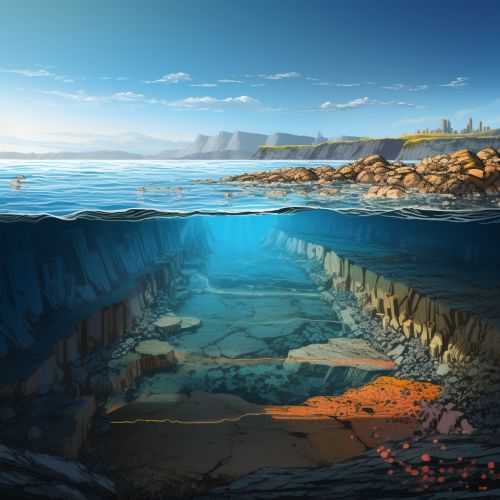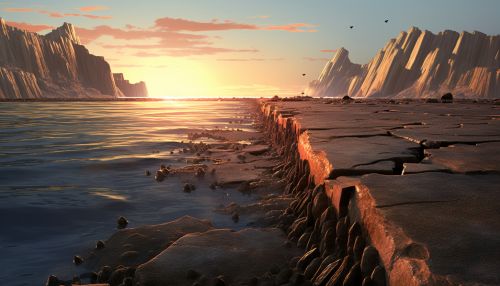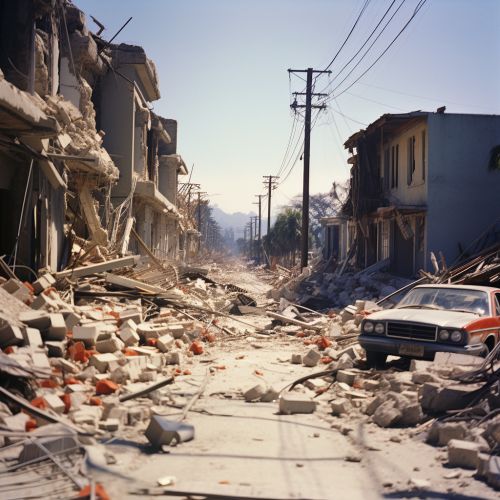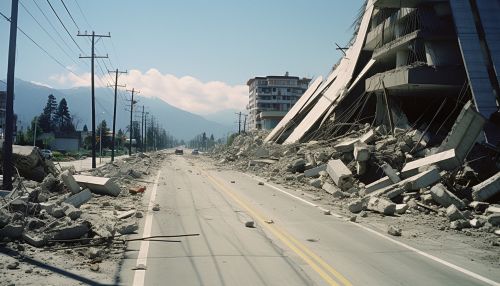The Dynamics of Subduction Zone Earthquakes and Tsunami Generation
Introduction
A subduction zone is a region of the Earth's crust where one tectonic plate moves under another, sinking into the Earth's mantle as the plates converge. This process can generate significant seismic activity, including some of the most powerful earthquakes known to occur on Earth. These earthquakes, in turn, can trigger tsunamis, which are large ocean waves that can cause widespread destruction when they reach coastal areas. This article explores the dynamics of subduction zone earthquakes and tsunami generation in detail.


Subduction Zone Dynamics
Subduction zones are characterized by the process of plate tectonics, a theory that explains the large-scale motions of Earth's lithosphere. The lithosphere is broken up into several large and small tectonic plates that float on the semi-fluid asthenosphere beneath. When two plates converge, the denser plate, typically an oceanic plate, is forced beneath the lighter plate, usually a continental plate, in a process known as subduction.
The subducting plate sinks into the mantle, creating a deep oceanic trench at the surface. As the plate descends, it is subjected to increasing pressure and temperature. This causes the release of water from hydrated minerals within the oceanic plate, which rises into the overlying mantle wedge. The addition of this water lowers the melting point of the mantle rock, leading to partial melting and the formation of magma. This magma can rise to the surface, leading to volcanic activity in what is known as a volcanic arc.
Mechanics of Subduction Zone Earthquakes
The process of subduction is not smooth. The subducting and overriding plates are often locked together by friction along the subduction interface, also known as the megathrust fault. Stress builds up as the plates continue to converge, and when the stress exceeds the frictional force, the locked section of the fault slips, releasing the stored energy as an earthquake.
Subduction zone earthquakes, also known as megathrust earthquakes, are among the most powerful earthquakes in the world. They occur along the interface between the subducting and overriding plates, and can reach magnitudes of 9 or higher on the Moment Magnitude Scale (Mw). The largest recorded earthquake, the 1960 Valdivia earthquake in Chile, was a megathrust earthquake that reached a magnitude of 9.5 Mw.
The slip along the fault during a subduction zone earthquake can be tens of meters, and the rupture zone can extend for hundreds of kilometers. This large slip and rupture area, combined with the shallow depth of the earthquake, can displace a large volume of water, leading to the generation of a tsunami.


Tsunami Generation
A tsunami is a series of ocean waves with long wavelengths and period, usually generated by disturbances associated with earthquakes occurring under or near the ocean. During a subduction zone earthquake, the sudden slip along the fault displaces the overlying water column, initiating the tsunami.
The initial wave forms above the epicenter of the earthquake. As the wave propagates across the ocean, its speed depends on the water depth, with the wave traveling faster in deeper water. This results in a wave train, with the leading wave followed by a series of waves at intervals.
When the tsunami wave approaches the shore, the wave height increases due to the decreasing water depth. The wave can inundate coastal areas, causing destruction and loss of life. The extent of the inundation depends on the local bathymetry and topography, as well as the size of the tsunami.
Mitigation and Warning Systems
Given the destructive potential of subduction zone earthquakes and tsunamis, it is crucial to have effective mitigation strategies and warning systems in place. Seismic networks monitor earthquake activity around the world, and can provide early warning of a potential tsunami. Tsunami warning systems use data from seismic networks, as well as sea level gauges and deep ocean pressure sensors, to detect tsunamis and issue warnings.
Building codes and land use planning can also reduce the risk from earthquakes and tsunamis. Structures in seismic zones can be designed to withstand the forces generated by earthquakes, and coastal areas at risk from tsunamis can be identified and development restricted.
Despite these measures, subduction zone earthquakes and tsunamis remain a significant hazard. Continued research into the dynamics of these events, as well as improvements in warning systems and mitigation strategies, are essential to reduce the risk they pose.
